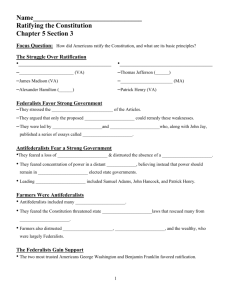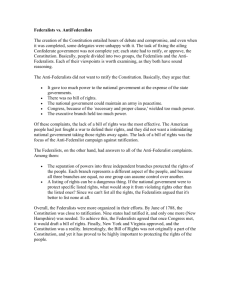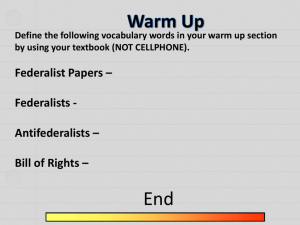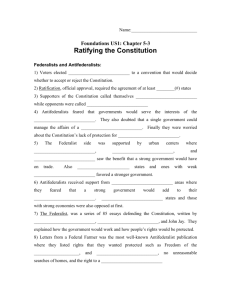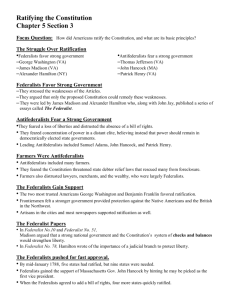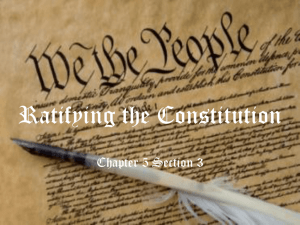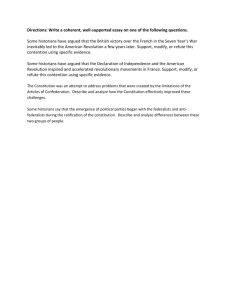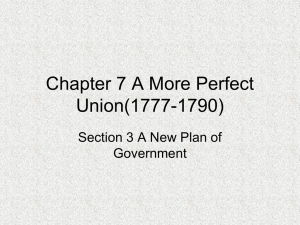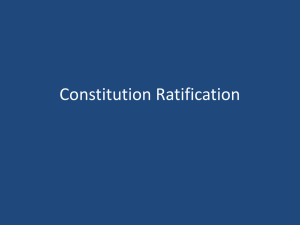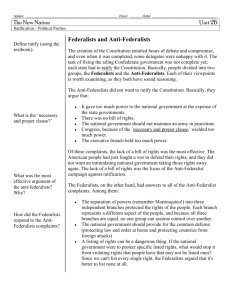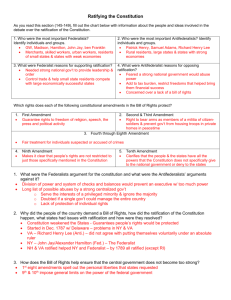Ratifying the Constitution: Federalists vs. Antifederalists
advertisement
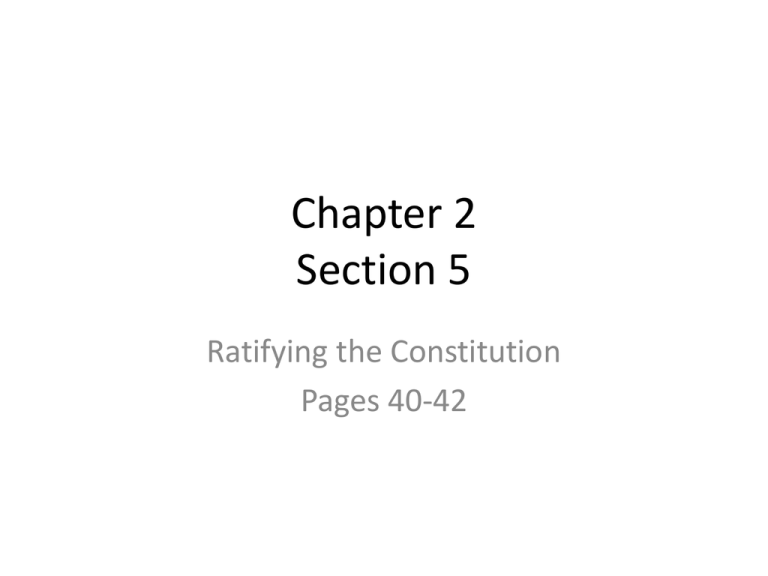
Chapter 2 Section 5 Ratifying the Constitution Pages 40-42 Objectives • Identify the main arguments in the debate over ratification of the Constitution. • Discuss the role of a bill of rights in the debate. • Identify the key states that were among the last to ratify the Constitution. Ratifying the Constitution • The signing of the Constitution did not mean the end of debate. People still mostly considered themselves New Yorkers or Virginians first, and Americans second. • We will review events that took place between September 17, 1787 and May 29, 1790. Federalists and Antifederalists • Federalists: supported a stronger federal form of government. • Antifederalists: opposite of federalist. New York and Virginia were antifederalists states. • Patrick Henry, from Virginia was an antifederalists knew that a national government would be to powerful. • A strong executive would be to similar to a monarch. • The antifederalists largest criticism was the lack of bill of rights. • Federalists: argued that separate powers belong to each branch of government and each would check on the other branches. • Federalists: bill of rights, Federalists believed the people have the right to free speech and the Constitution did not need to specify. Ratification • December 7, 1787: Delaware was first to ratify the Constitution. • The Federalist Papers: respected as an analysis of the Constitution and of the foundations of U.S. government. These newspaper articles were written by Hamilton, Madison, and John Jay. • June 21, 1788: New Hampshire, Virginia, and New York ratified the Constitution. • To gain passage of the Constitution the Federalists promised in the first Congress to pass a bill of rights. • November, 1789: North Carolina ratified • May, 1790: Rhode Island ratified • March 4, 1789:The first Congress met in New York City • April 30, 1789: George Washington became the first President of this new nation.
